
Farmers deliver value you can FEEL.
What makes you proud of your community? The places we call home give us all the feels, usually because they are tied to people and memories. Farmers picked a place to call home generations ago. And, much like you, they have built memories and pride in, and into, their communities. What we don’t always see is the value of that generational dedication to making our communities flourish. Farmers — delivering a different kind of value: the feeling kind.

It’s time to experience the value your farmers deliver.
When you think about the donut shop, the metal fabricator or the tasty treat that’s been around your community for generations — you’re glad they’re part of the community fabric. Why? Because they’ve provided jobs, they’ve supported community activities, they’ve invested in your town. While most farms aren’t adding their logo to the high school football program, they are investing other ways with the exact same impact — they just don’t have the brick and mortar you stop by!
Keeping it in the family
Most farms in Indiana are family owned and operated. More than just a 9-5 job, farming is a family legacy. From one fence post to another, those acres in between will see generations of the same family invested in keeping it for the next.
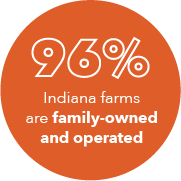
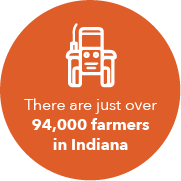
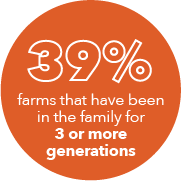
Pristine like grandpa’s Chevy
When you know you’re handing something over to the next generation, you keep it in good condition. For farmers, that means keeping soils and waters clean. Farmers work with agronomists and consultants to make sure they’re using the right nutrients, at the right time, in the right places at the right rate. They call these the 4R’s and they make sure two things happen: farmers use the right amount of nutrients for their bottom line and for the river bottoms alike.
Over the last year, Indiana farmers have kept:
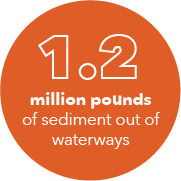

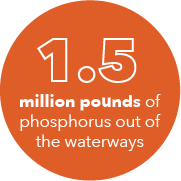
Nutrients applied are absorbed by soils and then used by the crops farmers grow.
Farmers only apply as many nutrients as their soil and plants need, because why pay for something you’re going to wash down the stream?
Looking for the worm
Farmers are building soils full of a whole universe of living microorganisms that help them feed the world — and your grocery store shelves.
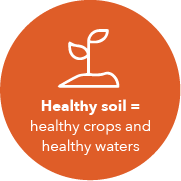

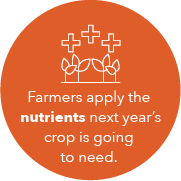
Practice makes perfect
Like you, farmers have been adding technology to make our lives easier — and make what they do better for the land and animals they care for. New practices come from lessons learned. They invest lots of time and dollars in learning. Programs across the state evaluate everything from variable rate nutrient application, to using drones to see where specific areas of their fields need additional nutrients.
It’s not one size fits all. It’s like taking your backyard and evaluating it in little 1 foot x 1 foot patches — that’s how detailed their dedication to doing the right thing for the right soil can get!
Some things they’re doing:
![]()
Implementing no-till, which basically means not removing residue from
last year’s crop before this year’s planting. Without technology advances,
they couldn’t do that and we wouldn’t gain:
Reduced erosion
Improved soil health
Reduced fuel usage
Great water conservation
![]()
Planting cover crops, or plants that are planted between
cash crops to keep soil in place, helps to:
Reduce erosion
Promote water filtration
Limit pest and disease outbreaks
Increase soil organic matter and structure
In 2019, Indiana farmers planted 950,000 acres of cover crops!
![]()
Practice sharing. Since 2011, farmers have been trialing new ways to
evaluate nutrient use and application and sharing results with each other.
This project, called INfield Advantage, has evaluated approximately
70,000 acres across Indiana and worked with over 800 farmers!

Over the hills and through the woods to a sustainable Earth we go
Through Indiana’s Conservation Reserve Enhancement Program, Hoosier landowners are working to help improve water quality, protect wildlife natural habitats and reduce nutrient losses. With more than 20,000 protected acres (that’s more than 15,000 football fields!), Indiana farmers are dedicated to protecting this land for generations to come.
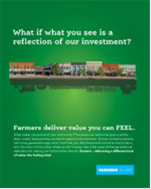

Sources
Indiana Business Research Center, Kelley School of Business, Indiana University. 2019. “The Economic Impact of Animal Agriculture in Indiana’s Regions.”
Indiana State Department of Agriculture. (n.d.). About Indiana Agriculture.
UC Sustainable Agriculture Research and Education Program. 2017. “Cover Crops.” What is Sustainable Agriculture? UC Division of Agriculture and Natural Resources.


